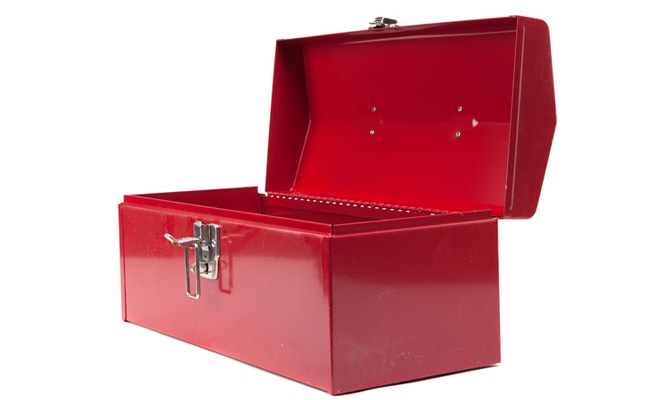
PHOTO: JSOLIE/E+/GETTY IMAGES
We asked Pest Management Professional‘s columnists and editorial advisory board members to share the most unexpected/unusual tool in their toolbox. Here are some of the experts’ responses — including a few extra that didn’t make it into our November 2020 print edition.
Please take a minute to answer our latest one-question poll on this topic and let us know your most unusual tool: Reader poll: Your most unexpected tool
Judy Black, BCE: Inexpensive kneepads. I know there are expensive knee pads with gel inserts, articulated joints, special attachment devices, etc. But I like the $10 ones with the hard, plastic cover that let you slide along a tile floor. They fit my small knees; the Velcro holds them on just fine; and I can slide along and service the low areas of a commercial kitchen. (No judgment on people with the $50 knee pads — I’m just saying it can be a real personal decision.)
A stethoscope can help narrow in on carpenter ants in wall voids, and sometimes even rodents.
Dennis Jenkins: One of the most important tools in my toolbox is actually something most of us carry in our pockets: a smartphone that has a camera, and the ability to share pictures and videos. With a camera, you can take pictures of pests and send them to your staff entomologist for identification. Don’t have a staff entomologist? Did you know you can send those pictures to the entomologists at the National Pest Management Association (NPMA) and they can help you? You also can send videos of situations to someone who can assist, whether it is a buddy, a boss, or an association staff member. Often you can get answers and formulate a game plan in such a way that your customer didn’t even know you were in need of help.
Phones allow us to immediately reach out for assistance and share information and pictures so we can formulate the best plan of action and solve our customers’ pest problems. If you don’t have someone to send them to, join an association like the NPMA or the one in your state so you can get help. If you are really worried about time, you can also download the NPMA’s Field Guide app to assist you in making an identification and give treatment suggestions.
It’s not always about what you know. Sometimes, it is about having the resources to figure it out in a timely manner and solve problems, all while being the hero to your customer. Together, we are stronger — and smarter!
Dr. Jim Fredericks: My termite inspection toolbox always includes a short hacksaw blade. It’s the perfect shape to slide between “sistered” joists and other construction seams to find hidden mud shelter tubes and termites.
Mark Sheperdigian, BCE: Alligator forceps. I use it to reach into holes or crevices too deep or too tight for forceps and grab anything I might want to get or retrieve. I have used it get bugs, pest evidence, a lost screw or nut, and the list goes on.
Michael Broder: My MacGyver tool in my toolbox is a paper clip. It’s great to help unclog a tip of a duster bulb and even to probe into small cracks for bed bug inspections.
Paul Hardy: Hacksaw blade. Best inspection tool ever for all services.
Frank Meek, BCE: A contact list app on my phone. If I don’t know what it is or what to do, I can call a contact who will know the answer and doesn’t mind helping me.
Dr. Faith Oi: Contact information for other experts in industry and academia I can rely on to provide credible, evidence-based guidance to solve pest management industry problems.
Dr. Stephen Vantassel: A pen that is designed as a kubaton. You never know when you need a self-defense tool.
Leave A Comment